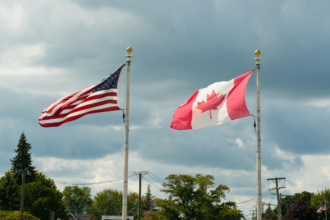Following the tragic collision of the container ship Dali with Baltimore’s Francis Scott Key Bridge, the owners have been directed to pay the US government damages exceeding $100 million (£77.1 million). On Thursday, the US Justice Department revealed the settlement, ending a month-long civil lawsuit against Grace Ocean Private Limited and Synergy Marine Private Limited, who owned and ran the Dali.
One of the Worst Transportation Disasters
The Justice Department classified the 26 March incident—six construction workers lost their lives, and enormous volumes of debris were dumped into the Patapsco River—as one of the biggest transportation tragedies in recent memory. Government officials claim that other government agencies directly involved in the reaction or affected by the aftermath and the US Treasury will be reimbursed.
“This is a tremendous outcome that fully compensates the United States for the costs it incurred in responding to this disaster and holds the owner and operator of the Dali accountable,” said Brian Boynton, head of the Justice Department’s civil division, in a news release.
What Are the Costs and Consequences of the Collision?
However, The deal does not include any reimbursement for the reconstruction of the Francis Scott Key Bridge. The Justice Department stated that Maryland, the state, has separately claimed damages, especially for reconstruction expenses. Federal reports indicate that mechanical and electrical problems on board the Dali led to the disaster. The Justice Department said poor maintenance led to the ship losing power and finally running afoul of one of the bridge’s columns.
How Did the Collision Affect People and the Environment?
Six men, construction workers on the bridge that day fixing potholes, sadly passed away in the collision. The effect sent the workers down into the river below, where they drowned. Along with releasing thousands of tons of trash into the Patapsco River, the crash seriously hampered traffic and cargo. The Justice Department’s report claims that the collision left 50,000 tons of asphalt, concrete, and steel mixed in the river, stopping activities at one of the busiest US ports.
The federal government responded by organizing a concerted cleanup effort with dozens of federal, state, and local entities working nonstop to clear the trash and protect the shipping routes. “Our teams worked around the clock for months to restore safe navigation through one of America’s most critical commercial corridors,” said a National Oceanic and Atmospheric Administration spokesman, one of the agencies engaged in the project.
What Were the Economic Ramifications and Regional Disruptions?
The area suffered economically, and the bridge was out of use. The halted shipping activities at the Port of Baltimore impacted hundreds of companies depending on its seamless operations. Federal authorities say the “economic devastation” the bridge fall created affected East Coast supply systems. Months following the first incident, the port was finally able to start commercial navigation in June.
The harm did not stop there; many local commuters, who depend on the bridge daily, suffered delays and detours resulting from its closure, further aggravating the regional disturbance the tragedy generated.
The Justice Department underlined that this agreement is only the start of the party’s accountable process.
Diplomatic Rift Between Canada and India Sparks Concerns Over Trade and Immigration








